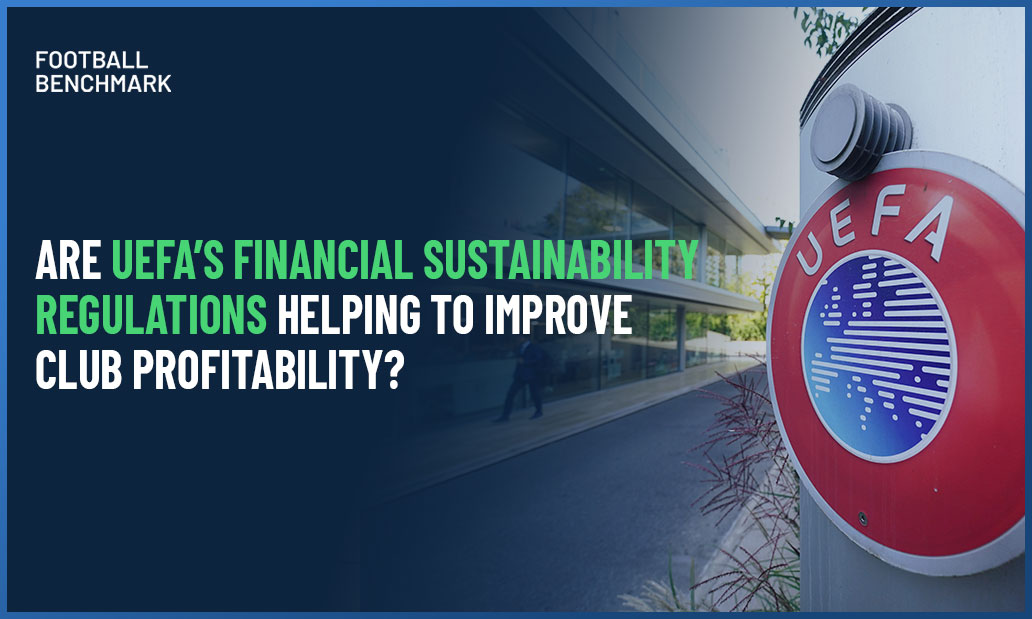
Paris Saint-Germain’s Désiré Doué has been named the European Golden Boy Absolute Best 2025, succeeding last year’s winner Lamine Yamal as Europe’s outstanding U21 player.
The Golden Boy Football Benchmark Index, developed by Football Benchmark in collaboration with Tuttosport, provides a data-driven assessment of Europe’s top young players. It assesses on-pitch performance, playing time, and club strength, forming the basis for the European Golden Boy Absolute Best award, with the final selection made by a jury of 50 journalists from across Europe. The 2025 ranking covers players born after 1 January 2005, assessed on performances between 7 October 2024 and 5 October 2025.
Following Yamal’s triumph in 2024, the Barcelona forward was no longer eligible to win the award, despite continuing to lead the Index in its latest update. This opened the door for a new emerging star to claim the coveted prize.
This article analyses Désiré Doué’s standout season, the patterns and trends across the finalists and the top 100, as well as looking at how these patterns reflect broader youth development across European football.
Doué’s standout year
Désiré Doué claimed this year’s award with an impressive rating of 93.2 in the Index, highlighting his rapid rise as one of Europe’s standout young performers. He made 64 appearances across all competitions: 59 for Paris Saint-Germain FC and 5 for France, including making his senior international debut during the assessment period. Integral to PSG’s Ligue 1, UEFA Champions League, and Coupe de France-winning campaign, the Frenchman contributed 32 goal involvements (16 goals and 16 assists).
His performance was reflected not only in his output on the pitch but also in his market value, which more than tripled over the past year, climbing from €38.1m in September 2024 to €114.1m in September 2025. The most significant jump occurred between February and June 2025, when PSG went on an extraordinary run of form, culminating in their first-ever Champions League triumph. Doué scored twice, assisted, and was named Player of the Match in the final, cementing his transition from an emerging talent to one of Europe’s most valuable young players.
Inside the 25 Golden Boy finalists
On his way to winning the European Golden Boy Absolute Best 2025, Doué beat a highly competitive field of 25 finalists from top clubs across Europe. The finalists included the 20 highest-ranked eligible players in the Index alongside five emerging prospects recognised within the top 100.
Between June and September 2025, the combined value of the 25 shortlisted players rose from €1.03 billion to €1.26 billion (+22%), according to the two most recent updates of Football Benchmark’s Player Valuation platform. This growth highlights the ever-increasing long-term value of young players in today’s game.
Almost all players saw an increase in valuation, with Dean Huijsen (Real Madrid CF) recording the highest increase at +32%, followed by Estevão (Chelsea) at +31% and Giovanni Leoni (Liverpool) at +29%. In absolute terms, Huijsen also registered the most significant rise in value (+€19.8m), ahead of Estevão (+€15.1m) and Kenan Yıldız (Juventus, +€12.1m), the only three players to record double-digit million increases in this period.
Among the finalists, 10 players exceeded 3,000 minutes in competitive matches, an exceptional indicator of early first-team responsibility. Dean Huijsen (3,803 min), Aleksandar Stankovic (3,751), and Pau Cubarsí (3,596) led the group. Their consistent playing time underlines both their talent and the trust of top-tier managers.
Conversely, emerging prospects such as Franco Mastantuono (849 minutes) and Estevão (774 minutes) are being carefully managed, highlighting some clubs’ gradual integration policies. Internationally, only Turkish stars Kenan Yıldız and Arda Güler surpassed 20 senior caps during the assessment period, while 11 finalists have yet to make their full international debut.
Evolution of the Golden Boy finalists
PSG and Real Madrid topped the ranking of most represented clubs in 2025 with three finalists each, followed by Arsenal, Chelsea, Porto, and Tottenham Hotspur with two apiece. PSG’s mix of homegrown talents, such as Zaïre-Emery and Mayulu, alongside high-profile signing Doué, illustrates the club’s growing focus on integrating youth within its first team. The inclusion of Real Madrid’s summer signings, Huijsen and Mastantuono, following Arda Güler’s acquisition last year, highlights a long-term approach to investment in young players.
Viewed across the past three editions of finalists, the concentration of elite youth talent remains high among Europe’s leading clubs. Real Madrid have had five players overall across the combined top 25 lists, followed by Manchester United and PSG with four each. Chelsea, FC Barcelona, FC Bayern München, FC Porto, Manchester City, and Tottenham Hotspur have each featured three. This concentration underlines how the final stages of elite player development are increasingly concentrated within a small group of global powerhouses.
The Premier League remained the most represented league in 2025 with nine players, ahead of LaLiga and Ligue 1 with four each. When looking over the three years, the Premier League dominates with 19 players, followed by LaLiga (10) and the Bundesliga (9), while Ligue 1 and Portugal’s Primeira Liga each contribute seven. The trend reinforces the Premier League’s position as the leading hub for elite young talent, with Spain and Germany maintaining strong developmental pathways, while France and Portugal remain key exporters of emerging prospects.
By nationality, France and England again led, with five players each in 2025. This year has been consistent with the recent trend, with England (11) and France (9) producing the most top 25 talents over the three-year period, ahead of Spain (7) and Portugal (4).
Youth development patterns in the top 100
Across the last three editions of the Golden Boy Football Benchmark Index top 100, the average age of players has remained stable at around 19.3 years, underlining the early maturity and first-team exposure of Europe’s most promising young talents.
When considering unique players (each counted only once per club), Chelsea rank first with 10 players, ahead of RB Leipzig (9) and Red Bull Salzburg (8). Brighton & Hove Albion FC and RC Strasbourg complete the top five with seven players each.
Chelsea’s leading position reflects their sustained investment in youth recruitment and the benefits of their strategic link with RC Strasbourg within the BlueCo network, creating a platform for player development and first-team experience. Several players tied to Chelsea have featured in the top 100 as Strasbourg representatives, including Mamadou Sarr and Mike Penders, both loaned back to Strasbourg after joining Chelsea.
The Red Bull network has similarly established itself as one of Europe’s most effective talent ecosystems. Together, RB Leipzig and Red Bull Salzburg have produced 17 players across the last three top 100 editions. Salzburg plays a key role in nurturing young players, while Leipzig provides a competitive platform at the top level, creating a flexible pathway that blends scouting, development, and progression within the same structure.
These clubs highlight the growing role of multi-club ownership in developing elite young talent and the importance of structured scouting systems in European football.
The value of youth in Europe’s evolving landscape
The evolution of the Golden Boy Football Benchmark Index over recent seasons underscores the growing sophistication of Europe’s youth landscape. Elite clubs are accelerating player pathways and leveraging data to identify and nurture top-tier talent. At the same time, the depth of quality across the 25 finalists and top 100 players reveals a structural shift: a generation of players achieving high market valuations earlier in their careers, supported by competitive minutes at senior level and more deliberate integration strategies across clubs and leagues. This broader trend highlights how youth development has become a strategic pillar across the game, not only as a sporting priority but also as a driver of long-term value creation.
At Football Benchmark, we support clubs, leagues, and investors in understanding the strategic role of youth development and its impact on sporting and financial performance. Through our intelligence platforms and advisory work, we help clients assess pathways, benchmark strategies against peers, and identify opportunities for sustainable growth in this area.



